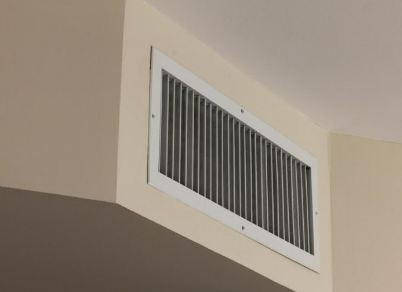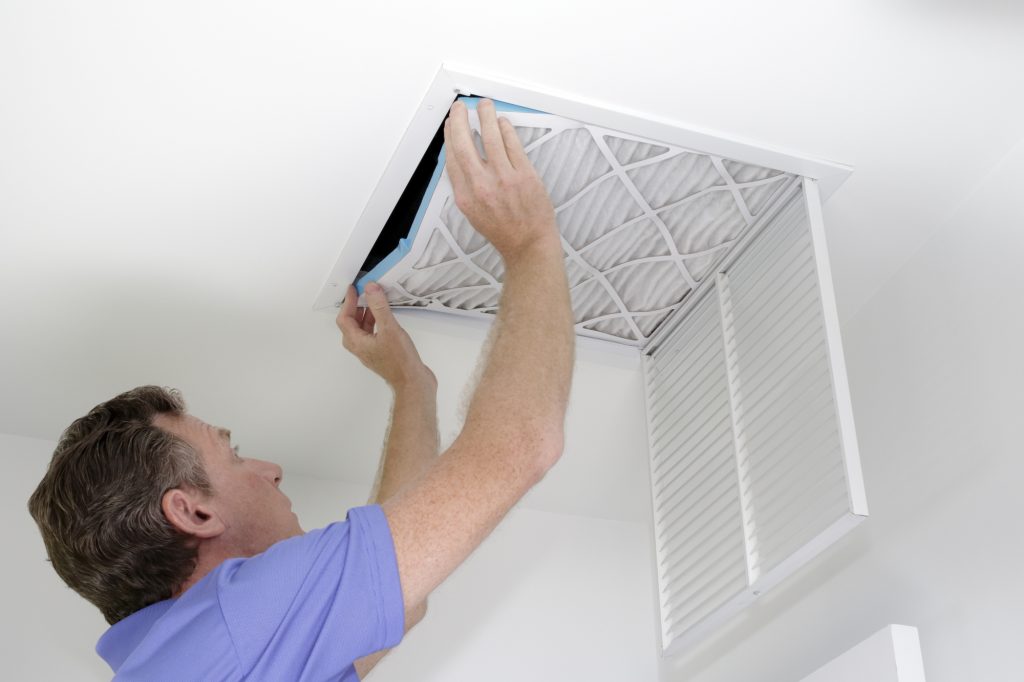You definitely need to know how to size a return air grill if you want your HVAC system to function properly. Here is a step-by-step guide.
Most of the issues that you might have with your heating and cooling duct system involve the return side — the duct itself, the air filter, or even the grill covering the duct. When the grill is the problem, it is typically because it is the wrong size and does not allow proper airflow. But how do you size a return air grill correctly?
What is a Return Air Grille and Why is it Important?
Properly called a grille (not grill) or less commonly, a vent, this is the ‘face’ that covers your duct system. Supply grilles cover the openings where the heated or cooled air is pushed out into the rooms, and return grilles do the same where air is drawn back into the system for recirculation.
Although they often look very similar, there are two easy ways to identify which is which — placement and air pressure. Supply grilles are usually installed in the ceiling, while return air grilles are most-often installed in the floor or on the lower part of a wall. For a simple test, hold a tissue close to the grille, and the positive or negative airflow will eliminate any doubts.

Typically made of aluminum or plastic, a return grille usually holds a replaceable filter in place. The purpose of a filter grille is to keep debris, dust, and allergens from being sucked back into your ductwork and your HVAC unit’s blower assembly.
What Happens if the Return Air Filter Grille is the Wrong Size?
If your return grille is not the right size, it reduces the effectiveness of your entire system. If it is too small for the capacity of your HVAC unit, the unit becomes “starved for air” and cannot provide an adequate supply of heated or cooled air. If it is too large or improperly installed, it may allow debris to pass through.
How to Tell if a Return Air Grille is the Wrong Size
Filter grilles are undersized far more often than they are oversized. If the grille is too small, either physically in relation to the size of the return duct or in terms of airflow capacity in relation to the entire system, there are a few tell-tale signs :
- A high-pitched whistling sound
- Inadequate airflow
- Reduced comfort
- System running longer than necessary
- Higher energy bills
How to Properly Size a Return Air Grille for the Duct Opening
When measuring a grille to fit into the return duct. Use the size of the opening, not the frame size of the grille. The grille should recess snuggly into the opening and the wider frame should overlap on the exterior.
How to Properly Size a Return Air Grille for Capacity
The capacity of your HVAC system determines the amount of air moving through your system, usually measured in cubic feet per minute ( CFM ). This dictates the total amount of return air grill area you need in your home.
There are two ways to determine this — BTU output of the furnace or the tonnage of your air conditioner unit. These ratings can be found on the units themselves, typically as a sticker or newer models or a riveted plate on older models.
When using British Thermal Units (BTUs) to calculate your need:
- If you divide your furnace’s BTU rating by 50, that tells you how much CFM your furnace blows. For example, a furnace rated at 100,000 BTUs pushes out 2000 cubic feet of air per minute.
- One square inch of filter grille area can handle 2 CFM, so in the example above, you would need 1000 a of total square inches of return grille area.
- Use the length and width of common grille or filter sizes — 20 X 20, 25 X16, etc. — to calculate their area, and that will tell you the number and sizes of return air grilles you need.
When using the tonnage of your cooling unit to calculate your need:
- As a general rule, you need 200 square inches of return air grille area per ton of your air conditioning equipment. For example a 3-ton residential cooling unit requires 600 square inches of grille area.
Important Considerations
Now that you know how to calculate the size of your return grille needs, there are a few things to keep in mind.
FIRST, if you have both a furnace and a cooling unit, ALWAYS use whichever number is greater.
SECOND, although it is hard to match them exactly, try to keep the total return grille area aqs close to the actual need as possible.
THIRD, it is okay to have a little bit more grille area than absolutely necessary, but you run the risk of decreased efficiency and comfort if you have less area than is needed.
FINALLY, just as a reminder, always use the recommended size and type of return air filters and change them regularly, as directed.
The Benefits of the Right Return Air Grille
Whether you are building a new home, upgrading or renovating an older home, or just performing maintenance and upkeep, the right return filter grille coverage can make a big difference.
It may seem like a small consideration, but attention to this detail means greater comfort, lower energy bills, and less unnecessary wear and tear on your heating and cooling system.
